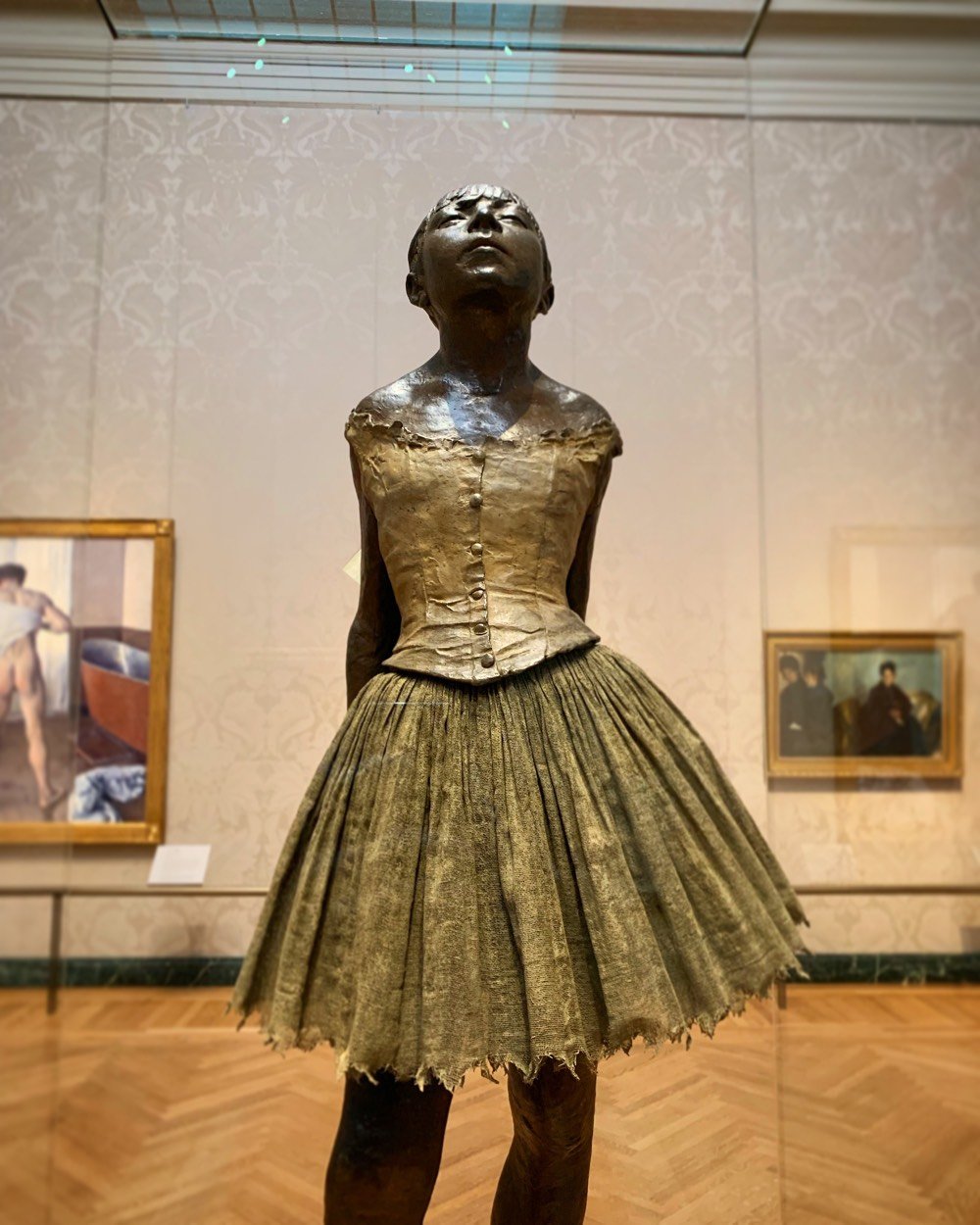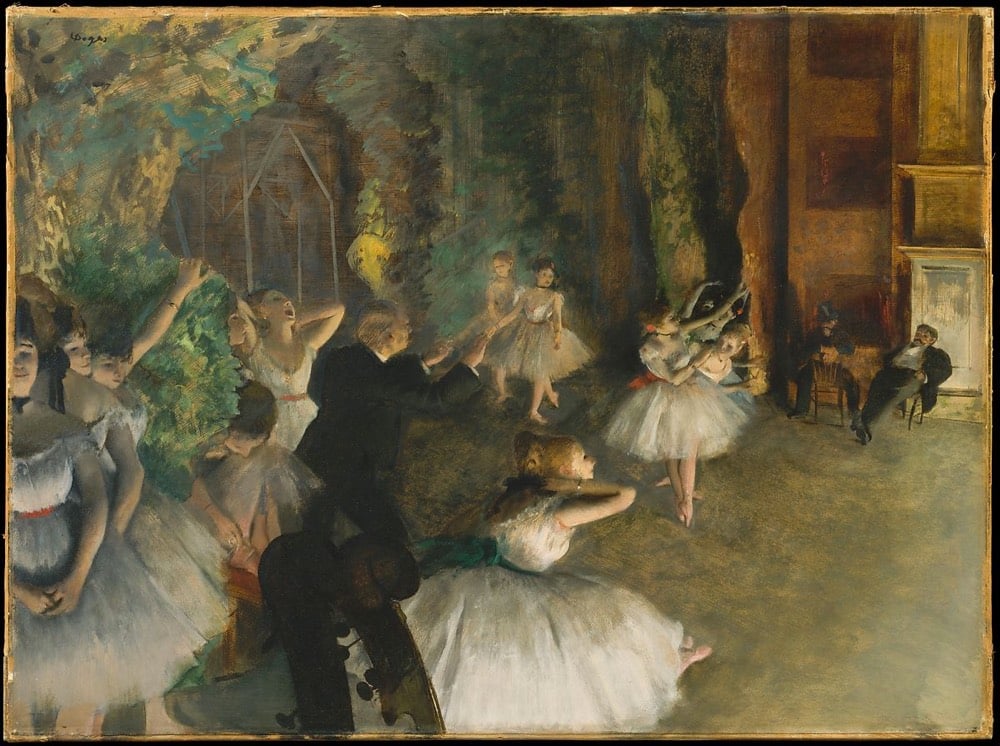La Petite Danseuse de Quatorze Ans
This past weekend I was in Boston for some cultcha and went to The Museum of Fine Arts. Among several paintings, pastels, and drawings of dancers by Edgar Degas, a bronze casting of his sculpture La Petite Danseuse de Quatorze Ans caught my eye:

This is Degas’s largest surviving sculpture and the only one he titled and exhibited. The original wax version, a portrait of a young Belgian dancer named Marie van Goethem, was shown at the 1881 Impressionist exhibition in Paris. The wax was tinted to resemble flesh, she wore a wig of real hair, and was dressed in pink slippers and bodice in addition to a skirt and ribbon similar to those on this cast. The excessive naturalism of the work offended many viewers, but the critic J.K. Huysmans called it “the only really modern attempt that I know in sculpture.”
I’ve seen many representations of ballet dancers in Degas’ work over the years, but this time around was different because I had read Julia Wolkoff’s The Sordid Truth behind Degas’s Ballet Dancers last year.
The formerly upright ballet had taken on the role of unseemly cabaret; in Paris, its success was almost entirely predicated on lecherous social contracts. Sex work was a part of a ballerina’s reality, and the city’s grand opera house, the Palais Garnier, was designed with this in mind. A luxuriously appointed room located behind the stage, called the foyer de la danse, was a place where the dancers would warm up before performances. But it also served as a kind of men’s club, where abonnés — wealthy male subscribers to the opera — could conduct business, socialize, and proposition the ballerinas.
Young members-in-training of the ballet companies were called “petits rats” in reference to their often impoverished backgrounds. As Wolkoff observes of the subject of the sculpture:
Marie van Goethem was the “petit rat” who posed for the sculpture, and she likely engaged in the sexually predatory economy of the ballet world to survive. Van Goethem disappeared from the public eye shortly after the sculpture was completed; after being late to a rehearsal, the Paris Opera Ballet dismissed her. The teenager probably returned home to follow in the footsteps of her mother — a laundress and likely prostitute — and older sister, who was also a sex worker.
Here’s a Degas painting of an on-stage practice from the collection at the Met:

What might look at first glance like a depiction of the beauty of dance takes on a more sinister nature when you notice the men on the right side of the painting, perhaps a pair of wealthy subscribers getting a special preview of that night’s ballet and their choice of ballerinas. You might never look at another of Degas’ ballet paintings the same way again.





Stay Connected